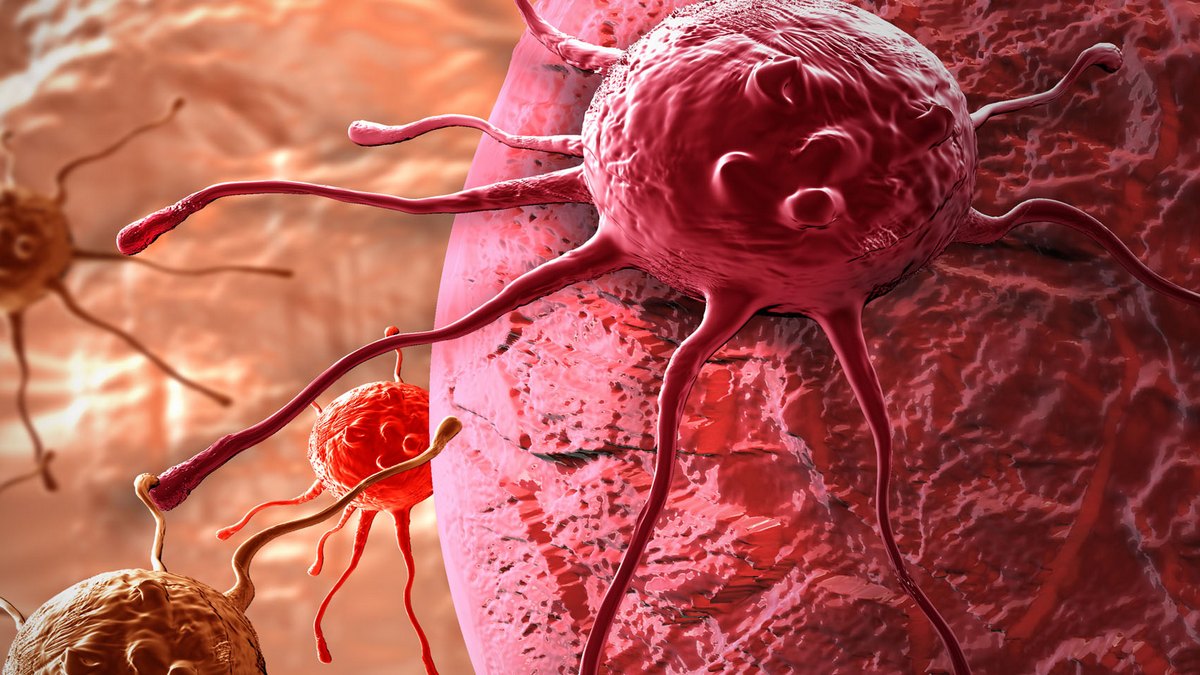
The method of creating silicon nanoparticles decorated with smaller gold particles was improved by scientists from Moscow State University together with colleagues from the Institute of Automation and Process Control of the Far Eastern Branch of the Russian Academy of Sciences, the university’s press service reported on August 26.
Silicon nanoparticles are used to diagnose and treat diseases using various biomedical technologies, including photohyperthermia. In this case, nanoparticles are placed in the area of the malignant tumor and irradiated with light in the transparency window of the biological tissue (near infrared range).
Due to the increased light absorption by these nanoparticles, the tumor heats up more than healthy tissue without nanoparticles. Cancer cells are destroyed when heated to more than 42 °C, while healthy tissue remains unharmed.
Stanislav Zabotnov, Associate Professor at the Department of General Physics and Molecular Electronics at the Faculty of Physics at Moscow State University, explained:
“Silicon nanoparticles are good because they are biocompatible and we can control their size, but silicon does not heat well in the near-infrared range due to weak absorption of incident radiation. To increase the heating efficiency, it is necessary to increase the concentration of nanoparticles, which is detrimental to biocompatibility and biodegradability, or to modify the particles with some absorbent substances that are slightly toxic to living organisms.”.
These particles may be nanoparticles of biocompatible noble metals, in which the heating will be greater due to plasmonic absorption. A team of scientists decided to create and explore the possibility of using silicon and gold particles for such purposes.
For medical purposes, good biocompatibility of nanoparticles is necessary. This is achieved due to the absence of toxic impurities in them, which can be residual products of chemical reactions that produce nanoparticles. To achieve the required purity of the composition, the researchers used the method of laser ablation (particle removal) of silicon in the liquid, which minimizes the amount of unwanted impurities.
They placed crystalline silicon wafers and porous silicon films in isopropyl alcohol and added chlorauric acid. During the ablation of the silicon, this led to the resulting nanoparticles being coated with gold inclusions.
In this way, they succeeded in obtaining nanocomposites with a “core-satellite” structure with a silicon core of several hundred nanometers in size, decorated with gold clusters of no more than a few tens of nanometers in size.
Furthermore, in the case of monocrystalline silicon during silicon ablation, the average particle size was 600 nanometers with a large size variation. While the ablation of porous silicon showed an improvement in the size distribution of the nanocomposites and allowed obtaining particles with an average size of 200 nanometers.
Smaller nanoparticles are easier to introduce into living organisms. Moreover, as demonstrated by the calculation of plasmon absorption for the near-infrared range (wavelengths close to 800 nanometers), optimal laser heating conditions are achieved for nanoparticles with an average size of 210 nanometers. And decorating them with gold increases the heating efficiency by 3 times compared to using particles without such decoration.
“So we show“,” summarized Vyacheslav Nesterov, a graduate student at the Department of General Physics and Molecular Electronics of the Faculty of Physics at Moscow State University, “ Potential to improve the properties of silicon nanoparticles using our production method. Future plans include using the resulting nanocomposites to treat cancerous tumors using photohyperthermia.”.
The researchers presented the results of the work in the article “Au-Si nanocomposites with high near-infrared light-to-heat conversion efficiency via single-stage reactive laser ablation of porous silicon for theranostic applications,” published in the journal Q1 ACS Applied Nanomaterials.
Source: Rossa Primavera
I am Michael Melvin, an experienced news writer with a passion for uncovering stories and bringing them to the public. I have been working in the news industry for over five years now, and my work has been published on multiple websites. As an author at 24 News Reporters, I cover world section of current events stories that are both informative and captivating to read.
